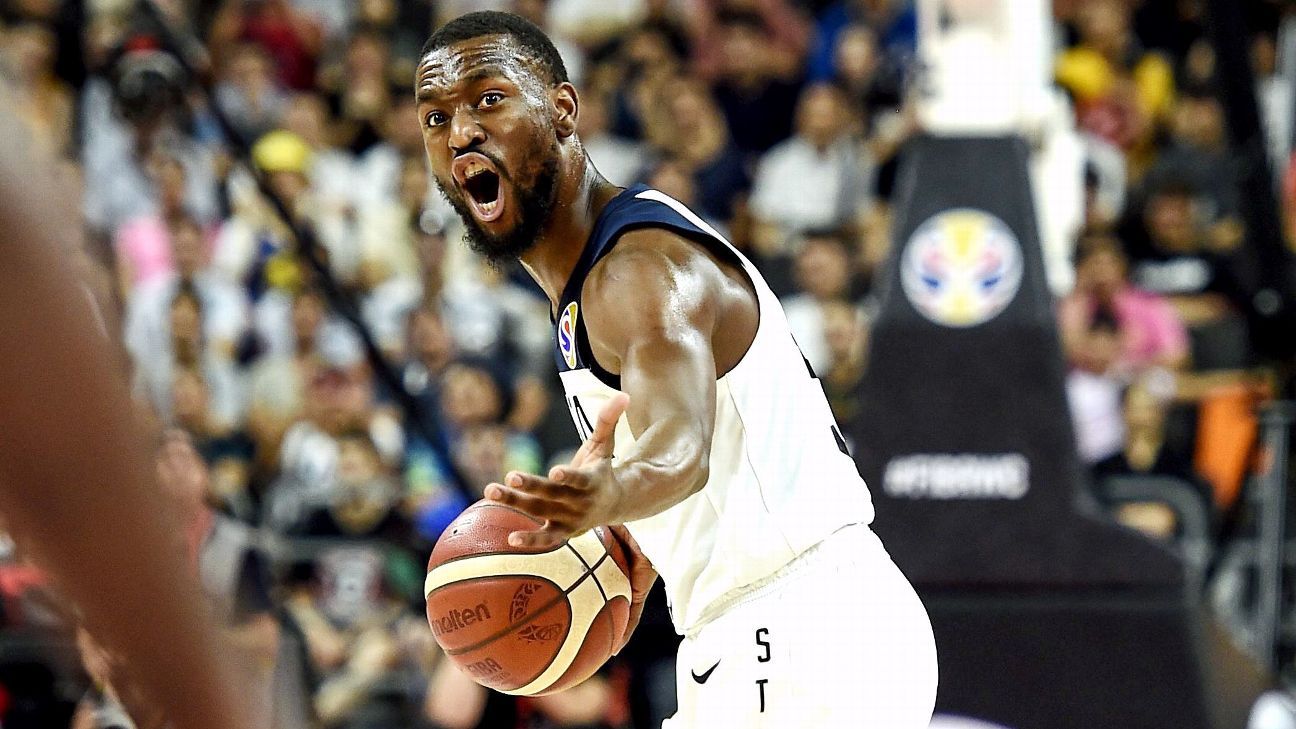France’s historic FIBA World Cup victory over Team USA on Wednesday left a lot of fans wondering how a roster full of American NBA players could lose in the quarterfinals of an international basketball tournament.
While the 89-79 defeat was disappointing for the Americans, it wasn’t surprising. This version of Team USA is incapable of dominating international opponents the same way previous iterations could, and the problems were fully visible down the stretch in this quarterfinal matchup in Dongguan, China. After Khris Middleton made a driving layup to give Team USA a 74-67 lead with 7:39 remaining, France finished the game on a 22-5 run, showcasing the ailment that ultimately killed this gold-medal chase: woeful offense.
In terms of offensive efficiency, this year’s model of Team USA just couldn’t match the firepower of its predecessors dating back to 2006:
In each of its previous six international tournament appearances, Team USA posted an offensive efficiency of 122 points per 100 possessions. This year’s team has managed to post only 111 because of two crucial shortcomings: half-court execution and shooting efficiency.
Check out these stats:
-
Per Synergy Sports, Team USA’s half-court offense ranks 18th in the World Cup by yielding just 88.8 points per 100 possessions (narrowly edging out Iran). France ranks first at 108.
-
Dating back to the 2008 Beijing Olympics, Team USA had averaged a monstrous eFG% of 58.7 in its previous five international tournament appearances. In China, Team USA is posting an eFG% of just 51.2, and the team’s six most active shooters are all shooting below that 58.7 baseline.
Shooting has become by far the most important skill in the sport, but Team USA’s volume shooters aren’t hitting at high efficiencies. Primary ball handlers Donovan Mitchell and Kemba Walker have been okay, but not great, while Khris Middleton and Jaylen Brown have been less effective than expected. No player, aside from maybe Joe Harris, has been a pleasant surprise. The end result is Team USA’s worst eFG% in years.
Over its past five international tournaments, Team USA converted a ridiculously strong 39.7% of its 3s — a number so high it would’ve been the best such mark by any team in the NBA last season. But this version of Team USA has made just 33%. That ranks 18th among World Cup teams and would’ve ranked 29th in the NBA last season. Only the Phoenix Suns converted a lower share of their 3s, and folks, that’s not good company for a group trying to be the best national team on the planet.
While Walker and Mitchell are both competent from deep, neither really thrives in the same ways that guys like Damian Lillard, James Harden or Stephen Curry do. This team lacks a truly deadly on-ball 3-point scorer. Besides Harris, nobody else has hit more than 36.4% from 3-point range, and half of the American roster has tried at least 10 3s but failed to make more than a third of the attempts. Yuck!
But Team USA also has struggled inside the arc. Over the past five international tournaments, the senior national team had converted 58.2% of its 2-point shots. That figure has dropped to a measly 52.6% in China, which ranks 12th overall, marginally better than Tunisia.
This group’s inability to put up points inside (including getting outscored 38-20 in the paint against Turkey) reveals the frontcourt wasn’t ready to compete against its international peer group, which includes phenomenal talents such as Rudy Gobert, Nikola Jokic and Marc Gasol.
Starting center Myles Turner has averaged only 7.3 points per game on 50% shooting. Lopez, the backup, has converted just 5-of-20 field goals. Against Gobert, when the bigs needed to step up, the centers combined to score two points. Coach Gregg Popovich opted to play small ball, despite the fact that Gobert was controlling the game on both ends of the court.
That didn’t work in part because Gobert was the best player on the floor and he’s more than capable of defending smaller players. But it also didn’t work because Team USA just lacked the kinds of shooters and ball movers to even play that way.
Since the 2004 and 2006 losses, Team USA’s rosters have included a hodgepodge of NBA superstars who generally out-talent other teams that may be more cohesive or more experienced units. If this tournament tells us anything, it’s that the world is now full of national teams ready and able to expose disjointed American squads. If USA Basketball wants to dominate these tournaments going forward, it has to improve both roster architecture and superstar participation rates.
Though these stats and the overall performance of Team USA should trouble American hoop heads, they are more a reflection of the state of Team USA participation than the state of American basketball. If guys such as LeBron James, Kawhi Leonard, Anthony Davis, Curry and Harden participate, these stats and this result would be different. The team almost certainly wouldn’t be chasing fifth place, starting with a Thursday matchup against Serbia (7 a.m. ET on ESPN+).
But not only did those guys skip this tournament, they also missed the 2016 Rio Olympics. In the era of sports science and load management, it’s fair to ask whether these absences are just a blip on the radar or if they mark a larger trend. We will find out more next summer as Team USA once again tries to reassert its dominance on basketball’s biggest stage.
